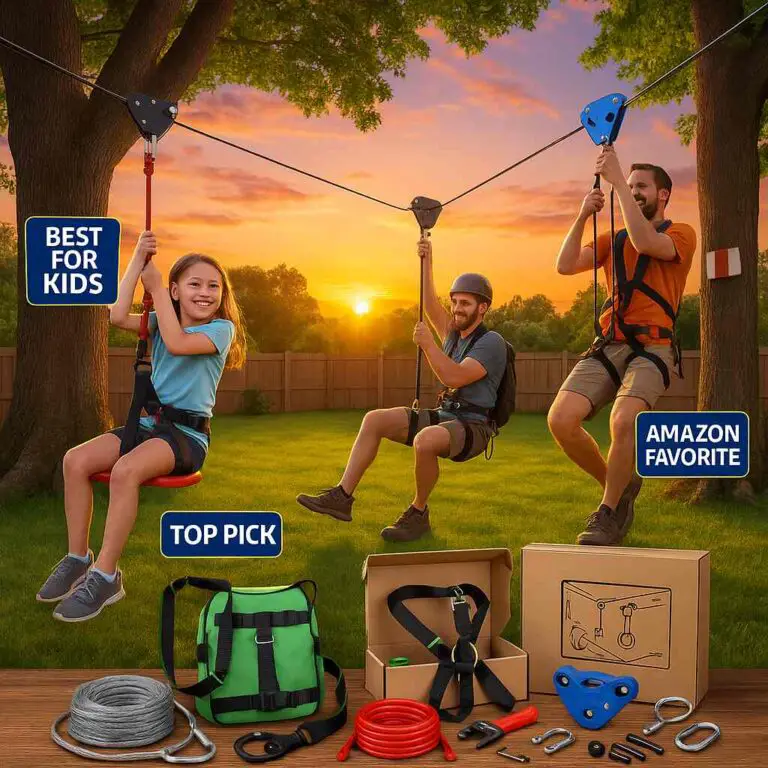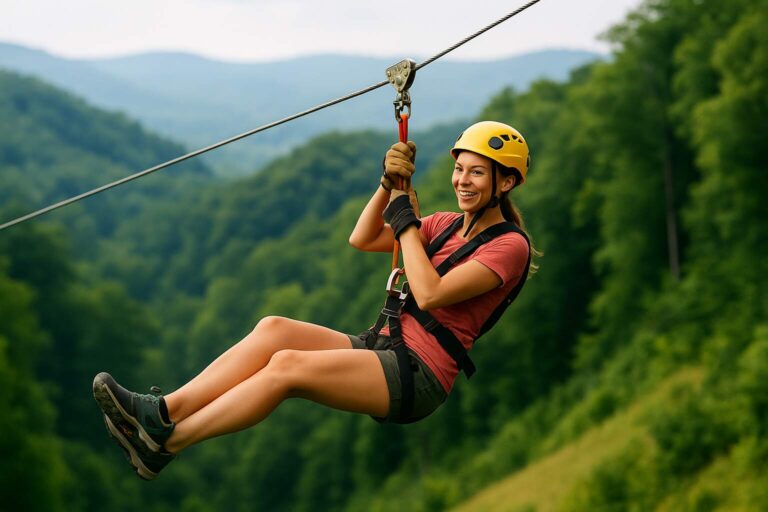Ziplining is an exhilarating activity that offers a unique way to experience nature and adventure. However, before you take the plunge, there are several important things you should know to ensure a safe and enjoyable ride. This comprehensive guide covers everything from the basics of ziplining to safety tips, what to wear, health considerations, and more.
Understanding the Basics of Ziplining
What is Ziplining?
Ziplining involves riding a pulley suspended on a cable, usually made of stainless steel, which is mounted on an incline. Riders are harnessed and glide from one end of the cable to the other, often at high speeds and across varying distances. Ziplining can be done in a variety of settings, including forests, mountains, and even urban environments.
Types of Ziplines
- Recreational Ziplines: These are commonly found in adventure parks and tourist destinations. They vary in length, height, and speed, providing different levels of thrill and accessibility.
- Canopy Tours: These ziplines are typically part of a guided tour through the treetops of forests or jungles. They often include multiple zipline segments, sky bridges, and hiking trails.
- Extreme Ziplines: These are designed for adrenaline junkies. They are usually longer, faster, and higher than recreational ziplines, offering a more intense experience.
Safety Considerations
Equipment and Gear
- Harness: This is the most critical piece of equipment. It should fit snugly and be properly adjusted by trained staff.
- Helmet: Protects your head from potential impacts.
- Carabiners and Trolleys: Ensure they are of high quality and in good condition.
- Gloves: Some courses provide gloves to help control your speed and protect your hands.
Safety Procedures
- Briefing: Pay close attention to the safety briefing provided by the staff. This will cover important information on how to use the equipment and what to expect during the ride.
- Inspection: Ensure the zipline course is regularly inspected and maintained. Check for certifications from reputable safety organizations. For example, many zipline parks in the U.S. follow the standards set by the Association for Challenge Course Technology (ACCT).
- Staff Training: Verify that the staff are trained and certified to operate the zipline and handle emergencies.
Case Study: Zipline Accident in Delaware In 2016, a tragic accident occurred at Go Ape zipline course in Delaware when a woman fell to her death. Investigation revealed that the victim had disconnected herself from the safety system. This incident underscores the importance of following safety protocols and listening to staff instructions. Read more about the incident here.
What to Wear
Appropriate Clothing
- Comfortable Clothing: Wear clothes that allow freedom of movement. Avoid anything too loose that could get caught in the equipment.
- Closed-Toe Shoes: Sturdy shoes with good grip are essential. Avoid sandals or flip-flops.
- Weather-Appropriate Gear: Dress in layers if the weather is variable. Consider rain gear if there’s a chance of rain.
Accessories
- No Dangling Items: Remove jewelry, scarves, and other accessories that could get tangled in the equipment.
- Secure Long Hair: Tie back long hair to prevent it from getting caught.
Physical and Health Considerations
Fitness Level
While ziplining does not require extreme physical fitness, it does involve some level of physical activity, such as climbing stairs or hiking to the starting point. Ensure you are comfortable with these activities.
Medical Conditions
- Heart Conditions: Consult with your doctor if you have a heart condition or any other medical issue that might be affected by physical exertion or stress.
- Pregnancy: Pregnant women are generally advised against ziplining due to the potential risks involved.
- Back or Neck Problems: The jarring motions and impact of landing might exacerbate these conditions.
Real Event: Pregnant Woman Enjoying Ziplining While generally not recommended, there have been instances where pregnant women have safely enjoyed ziplining. For example, in Costa Rica, some zipline companies have had pregnant women zipline under specific conditions and doctor’s approval. This shows the importance of consulting with your healthcare provider and understanding the risks involved.
Psychological Preparedness
Fear of Heights
Ziplining can be daunting if you have a fear of heights. However, many find it to be a manageable and rewarding way to confront this fear. Start with shorter, lower ziplines to build confidence.
Mental Readiness
- Stay Calm: Keep your breathing steady and try to remain calm. Trust in the safety measures and the staff’s expertise.
- Positive Mindset: Focus on the excitement and the beautiful scenery rather than potential risks.
What to Expect During the Ride
The Launch
The start of the zipline ride typically involves stepping off a platform. This can be the most intimidating part, but the harness will support you. Listen to the staff for cues and guidance.
The Ride
- Speed: Ziplines can vary in speed. Relax and enjoy the ride, using your body to stabilize if necessary.
- Scenery: Take in the views as you zip along. Many courses are designed to showcase the natural beauty of the area.
The Landing
Landing zones are usually equipped with braking systems to slow you down safely. Follow the staff’s instructions on how to position your body and prepare for landing.
Environmental and Ethical Considerations
Impact on Nature
- Eco-Friendly Courses: Choose zipline operators that prioritize environmental conservation and minimize their impact on natural habitats.
- Leave No Trace: Respect the environment by not littering and staying on designated paths.
Case Study: Sustainable Ziplining in Costa Rica Costa Rica is known for its eco-tourism, and many zipline tours there emphasize sustainability. For example, Selvatura Park in Monteverde works to preserve the cloud forest and educates visitors about the environment. Learn more about their efforts here.
Supporting Local Communities
Opt for zipline tours that contribute to local communities through employment and sustainable practices.
Choosing the Right Zipline Tour
Research and Reviews
- Read Reviews: Look for reviews from other riders to gauge the quality and safety of the zipline course. Websites like TripAdvisor and Yelp are great resources.
- Ask Questions: Don’t hesitate to contact the zipline operator with any questions or concerns.
Example: Top-Rated Zipline in Hawaii The Kohala Zipline in Hawaii is renowned for its safety and scenic beauty. With positive reviews highlighting professional staff and well-maintained equipment, it’s a top choice for many adventurers. Check out their reviews on TripAdvisor.
Consider the Location
- Proximity: Choose a location that is convenient and accessible.
- Scenery: Consider what kind of environment you’d like to experience, whether it’s a dense forest, mountain range, or coastal area.
Frequently Asked Questions
Is Ziplining Safe?
Yes, ziplining is generally safe when proper safety measures are followed. Choose reputable operators with good safety records and certifications.
How Fast Do Ziplines Go?
Speeds can vary greatly, from a leisurely 10 mph to thrilling rides exceeding 60 mph.
Example: Fastest Zipline in the World The Zip World Velocity 2 in Wales is the fastest zipline in the world, reaching speeds of up to 100 mph. Riders experience the thrill of flying while overlooking the beautiful Penrhyn Quarry. Read more about it here.
Can Children Zipline?
Many zipline courses offer options for children, with age and weight restrictions. Ensure the course is suitable for younger riders.
Case Study: Kid-Friendly Zipline The Adventure Park at Sandy Spring in Maryland offers a zipline and ropes course specifically designed for children as young as five. It’s a great way for kids to experience the excitement of ziplining in a safe environment. Learn more here.
Tips for a Great Zipline Experience
Plan Ahead
- Reservations: Book in advance, especially during peak seasons.
- Arrive Early: Give yourself plenty of time to check in, get fitted with equipment, and attend the safety briefing.
Stay Hydrated
Drink plenty of water before and after the ride, especially in hot weather.
Capture the Moment
Many zipline operators offer photography services. If you want to capture the experience, inquire about photo packages.
Conclusion
Ziplining is a thrilling and memorable activity that allows you to experience the outdoors in a unique way.
By understanding the basics, prioritizing safety, wearing appropriate gear, considering health and fitness levels, and choosing the right tour, you can ensure a fantastic and safe ziplining adventure. Whether you’re zipping through a lush forest canopy or soaring above stunning landscapes, the exhilaration and sense of achievement will be well worth it.








